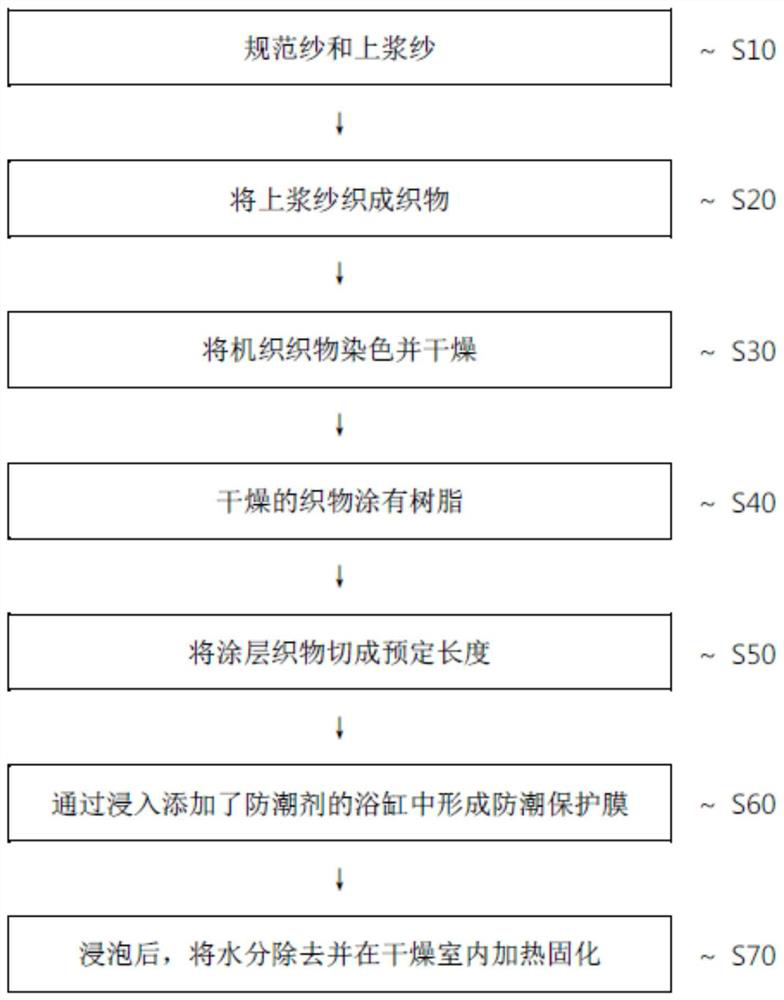Manufacturing method for improving adhesiveness of hook-and-loop fastener tape
A hook-and-loop fastener and hook-and-loop technology, which is applied to fasteners, textiles, papermaking, and liquid-repellent fibers, can solve the problems of reduced adhesion and inability to maintain adhesion levels, and achieve increased hardness and improved adhesion. Adhesion and anti-penetration effects
- Summary
- Abstract
- Description
- Claims
- Application Information
AI Technical Summary
Problems solved by technology
Method used
Image
Examples
Embodiment Construction
[0020] The advantages and features of the present invention and methods of achieving them will become apparent with reference to the embodiments described in detail below and the accompanying drawings. However, the present invention is not limited to the embodiments disclosed below, but will be implemented in various forms. The present invention is provided to fully inform the scope of the present invention, and the present invention is limited only by the scope of the appended claims.
[0021] Embodiments of the present invention will be described in detail with reference to the drawings. Regardless of the drawings, like reference numerals refer to like elements, and "and / or" includes each and all combinations of one or more of the mentioned items.
[0022] The terms used in this specification are for describing exemplary embodiments and are not intended to limit the present invention. In this specification, a singular form also includes a plural form unless it is clearly s...
PUM
 Login to View More
Login to View More Abstract
Description
Claims
Application Information
 Login to View More
Login to View More - R&D
- Intellectual Property
- Life Sciences
- Materials
- Tech Scout
- Unparalleled Data Quality
- Higher Quality Content
- 60% Fewer Hallucinations
Browse by: Latest US Patents, China's latest patents, Technical Efficacy Thesaurus, Application Domain, Technology Topic, Popular Technical Reports.
© 2025 PatSnap. All rights reserved.Legal|Privacy policy|Modern Slavery Act Transparency Statement|Sitemap|About US| Contact US: help@patsnap.com

